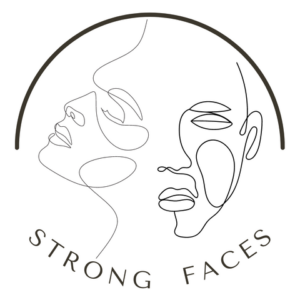Have you ever wondered why some sunglasses seem so much darker than others?
Or why your favorite pair makes everything look a bit dimmer than normal?
The answer lies in the concept of light transmission – how well or poorly a pair of sunglasses allows visible light to pass through.
Understanding light transmission is key to choosing the right sunglasses for different lighting conditions and activities.
In this post, we’ll break down what determines a sunglass lens’s light transmission rating and how that impacts the amount of light you see.
By the end, picking the perfect pair of sunglasses will super easy!
Knowing the right light transmission for various outdoor activities like water sports or hiking in sunny conditions is important for clear vision and protection from the sun.
Measuring Light Transmission
Sunglass lenses are rated for visual light transmission on a percentage scale from 0% to 100%.
A rating of 0% means the lens blocks all light from passing through, making the world behind it completely dark.
A rating of 100% means the lens has no tint or coating at all – it’s essentially like looking through clear glass.
Most sunglasses fall somewhere in the middle.
The amount of visible light allowed through impacts visual acuity and depth perception, especially in low-light conditions where more light transmission may be preferable.
The percentage rating is determined scientifically by measuring how much visible light is able to pass through a sample of the lens material under standardized lighting conditions.
Special light meters are used to compare the light intensity before and after it passes through the lens.
The higher the percentage, the more light – and details – you’ll be able to see clearly.
A higher VLT rating may be a good choice for overcast days when less light protection is needed compared to sunny conditions.
Choosing A Rating For Different Activities
As a general rule, the darker the lighting conditions, the lower the light transmission rating you’ll want for optimum eye protection and clarity of vision.
Here are some guidelines for common activities:
Driving
Look for lenses around 15-25% light transmission to reduce glare without making the road too dim.
This higher VLT is good for maintaining visual acuity on road trips during overcast conditions.

Hiking/golfing on sunny days
Lenses around 30-50% work well to balance visibility and UV protection.
This range allows for good depth perception on trails while still blocking much of the UV rays.
Beach days
Consider lenses with light transmission under 20% for bright sun near water or snow.
The low light transmission of 5-15% is perfect for water sports like swimming or fishing to cut through reflections on the water.
Fishing/boating
Extremely dark lenses around 5-15% are best to see underwater or spot fish in high glare conditions.
The darker tint reduces glare off the water for better vision in low light underwater.
The right rating will depend on personal preference as well.
If you prefer a darker, more shaded view, lean toward the lower end of the range.
Lower light transmission is also better for high altitude activities with more intense solar radiation.
Additional Lens Factors
Light transmission percentage alone doesn’t tell the whole story.
Other lens properties like tint, polarization, and coatings also impact the amount and quality of light reaching your eyes:
Tint color
Darker hues like brown will seem lower in light transmission than neutral colors like green. Brown lenses tend to offer more protection from harmful blue light.
Polarization
Polarized lenses reduce glare significantly but may appear slightly darker than non-polarized pairs with the same rating.
They’re perfect for cutting reflections off flat surfaces like water.
Coatings
Anti-reflective, mirror, and other advanced coatings can increase light transmission by a few percentage points compared to uncoated lenses.
Coatings improve visual clarity while maintaining good protection.
Understanding these additional factors will help you better understand which sunglasses will deliver the right balance of light versus protection.
A pair rated at 15% may actually feel closer to 20% thanks to a helpful coating.
This is an important factor for activities requiring clear vision like driving.
Other Questions You May Have
What percentage of visible light transmission is considered low VLT?
Generally, sunglasses with a VLT of 25% or lower are considered dark sunglasses. Anything under 10% VLT provides the most protection from bright light.
Do darker sunglasses block more UV light?
Sunglasses with a lower visible light transmission rate typically provide more UV protection. Darker lenses around 10% VLT or less can block over 99% of UVB light.
Does lens color impact VLT?
Lens color does play a role. Darker colors like brown appear to have a lower visible light transmission than neutral shades like grey at the same density. Lighter tints transmit more visible light.
Do photochromic lenses change VLT in bright conditions?
Photochromic lenses automatically darken in bright light or UV exposure to a lower VLT suitable for the conditions. They lighten back up in lower light for optimum visible light transmission indoors or in shade.
What category number is considered the right pair for everyday use?
Category 3 lenses that block around 15-25% of visible light are generally recommended for most everyday outdoor activities. This VLT range provides good vision and protection.
Do mirrored or silver mirror coatings impact VLT?
Mirror coatings are designed to reflect infrared, ultraviolet and visible light rays. They can decrease the VLT of plastic lenses by a few percentage points compared to non-mirrored lenses.
What role does polarization play in VLT?
While polarization itself doesn’t impact VLT, polarized lenses may appear slightly darker than non-polarized pairs with the same rating due to their ability to block reflected glare and ultraviolet rays.
How can I determine the right VLT for activities in low light conditions?
For activities like hiking or golf in shady areas, choose lenses with a higher VLT around 30-50% to maximize visibility and depth perception while still protecting eyes from UV damage.
What factors should I consider to make an informed decision?
Consider your purpose, weather conditions, activity level and individual eye factors. Doing a little research on VLT ratings and how they impact vision can help you select the right pair of sunglasses.
Final Thoughts
Now that you know all about light transmission percentages and the factors that influence them, choosing the perfect pair of sunglasses is the easy part!
Consider the lighting conditions you’ll be wearing them in most and pick a rating on the lower or higher end of the recommended range based on your personal preferences.
Don’t forget to account for tint color, polarization, and coatings too for the most accurate sense of how dark or light a pair will be.
With the right knowledge, you can prevent eye strain, protect your eyes from the sun, and always look cool in shades that suit your specific needs perfectly.
Make sure to take our quick and easy face shape quiz to determine which type of sunglasses suit your face the best!

